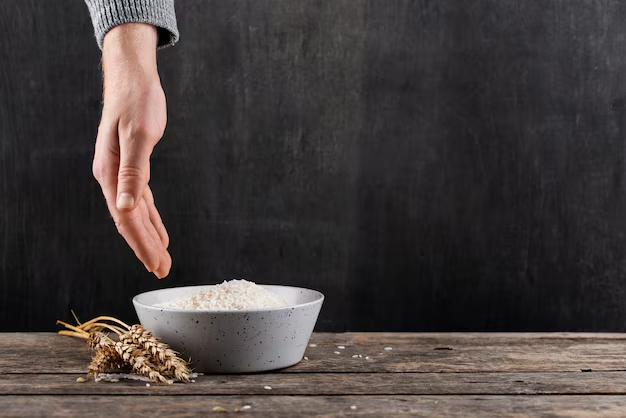Discover How Long Rice Lasts in the Refrigerator: Essential Storage Tips
Whether it's a staple in your weekly meal prep or a leftover treat from last night's dinner, rice is a versatile and beloved grain found in kitchens worldwide. But how long can you safely store cooked rice in the refrigerator? This comprehensive guide unpacks the details of rice storage, empowering you to keep your meals fresh and safe for as long as possible.
🍚 Understanding Cooked Rice Storage
Rice's Refrigeration Lifespan
The journey from pot to table—and then to the refrigerator—is one many of us are familiar with. Generally, cooked rice can be safely stored in the refrigerator for three to five days. This timeframe helps ensure that the rice remains fresh and minimizes the risk of harmful bacteria developing.
Important Factors Affecting Rice Storage:
- Temperature: Ensure your refrigerator is set below 40°F (4°C). This inhibits bacterial growth and enhances food safety.
- Storage Containers: Use air-tight containers to maintain moisture and prevent contamination from other foods.
- Reheating Practices: Rice should be thoroughly reheated to an internal temperature of 165°F (74°C) before consumption to kill any bacteria.
Why Does Rice Spoil?
Rice spoils due to bacterial growth, particularly when stored at improper temperatures. A specific bacterium, Bacillus cereus, is often associated with rice spoilage. When rice isn't refrigerated or heated correctly, these bacteria can thrive, potentially leading to foodborne illness. It's crucial to store and handle cooked rice properly to prevent these unwanted organisms.
🗓️ Extending Rice's Refrigerator Shelf Life
While the typical storage period is three to five days, by following a few strategic practices, you can maximize rice's freshness and perhaps squeeze out an extra day of quality.
Best Storage Methods
Rapid Cooling: After cooking, allow the rice to cool within an hour. Spread it thin in a shallow container for efficient cooling and transfer it to the refrigerator promptly.
Portion Control: Store in meal-sized portions to avoid repeated temperature fluctuations from frequent opening and closing of containers.
Proper Sealing: Use containers that seal completely to lock in moisture and flavor while preventing exposure to air and contaminants.
Helpful Tips for Rice Management
- Label and Date: Always label containers with the date to keep track of storage time.
- Sensory Check: Before consuming stored rice, conduct a quick sensory check for any off-odors or discoloration, which could indicate spoilage.
🍵 Related Subtopics: Beyond Basic Rice Storage
Rice isn't just a one-off dish—it often plays a key role in meal planning and complements various cuisines. Here, we look at related considerations for different types of rice and meal planning.
Different Types of Rice and Their Unique Properties
White Rice vs. Brown Rice
- White Rice: This popular grain tends to last longer than its whole-grain companion when cooked because it's milled and polished, removing oils that might otherwise speed spoilage.
- Brown Rice: With its bran and germ intact, brown rice retains healthy fats but spoils faster. Consume within three to four days for optimal safety and freshness.
Short-Grain vs. Long-Grain Rice
- Short-Grain Varieties: More moisture-retentive than long-grain rice, the potential for mushiness increases over time, impacting texture.
- Long-Grain Options: Often holds up better in storage thanks to a firmer structure, useful for making dishes like fried rice with leftovers.
Meal Prep with Rice
Rice is incredibly versatile in meal prep settings. It's a building block for a wide variety of tasty dishes.
Batch Cooking: Divide a large batch into smaller containers immediately after cooking, which preserves flavor and texture for future meals.
Diverse Flavor Combinations: Mix rice with different proteins and spices to keep meals interesting across several days.
Freezing for Future Use: If you anticipate not finishing refrigerated rice within the safe timeframe, consider freezing it instead. Frozen rice can last 1-2 months and is conveniently reheated in minutes.
🤔 Common Questions on Rice Storage
Can Reheating Rice Make It Safe to Eat Beyond Five Days?
While reheating rice thoroughly kills specific bacteria, it doesn't reverse spoilage. Eating rice stored beyond recommended timeframes risks digestive upset, so it's best to adhere to freshness guidelines.
What Is the Best Way to Reheat Rice?
For optimal texture, sprinkle a bit of water over rice and microwave it in a covered dish or gently steam it on the stovetop until piping hot.
Can I Flavor Rice Before Storing It?
Yes, adding spices or herbs before storage can infuse additional flavor, but ensure that all ingredients adhere to the same storage safety practices. Always refrigerate promptly and keep ingredients evenly distributed to maintain quality.
📋 Quick Reference: Safe Rice Storage Tips
Here's a handy guide for your refrigerator rice storage—complete with emoji markers for fun, easy reading!
- ✨ Freshness Tip: Always store rice within one hour of cooking.
- 📅 Reminder: Use up rice in 3-5 days.
- 🥶 Refrigeration: Maintain fridge temps below 40°F (4°C).
- 🛡️ Seal it Up: Store in airtight containers.
- 🔍 Check It: Always perform a quick smell and look test for signs of spoilage.
- 🔥 Reheat Thoroughly: Ensure rice reaches 165°F (74°C) during reheating.
A Deeper Appreciation for Rice Management
The simple yet profound act of storing rice in the refrigerator properly enhances both its taste and your overall food safety. Appreciating the nuances between different rice types and implementing best storage practices can make all the difference, assisting you in maintaining quality meals with less waste. Your culinary journey with one of the world's most beloved grains begins with these foundational storage insights!
